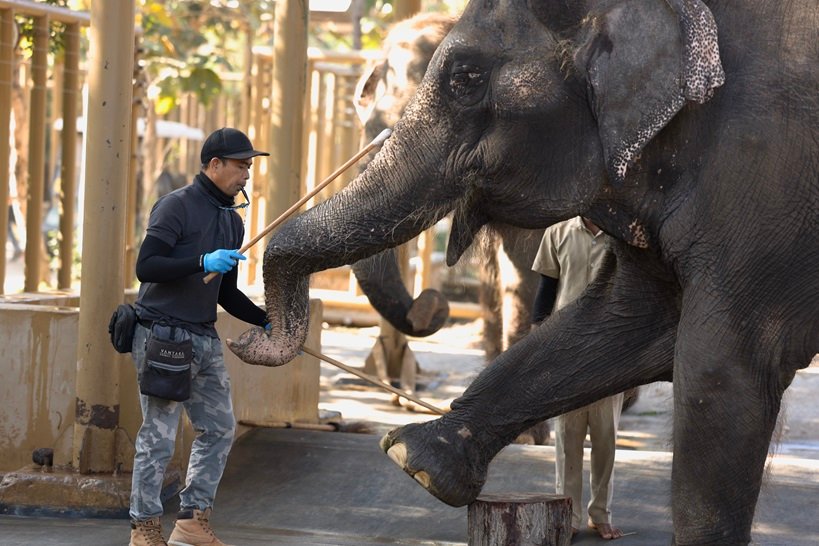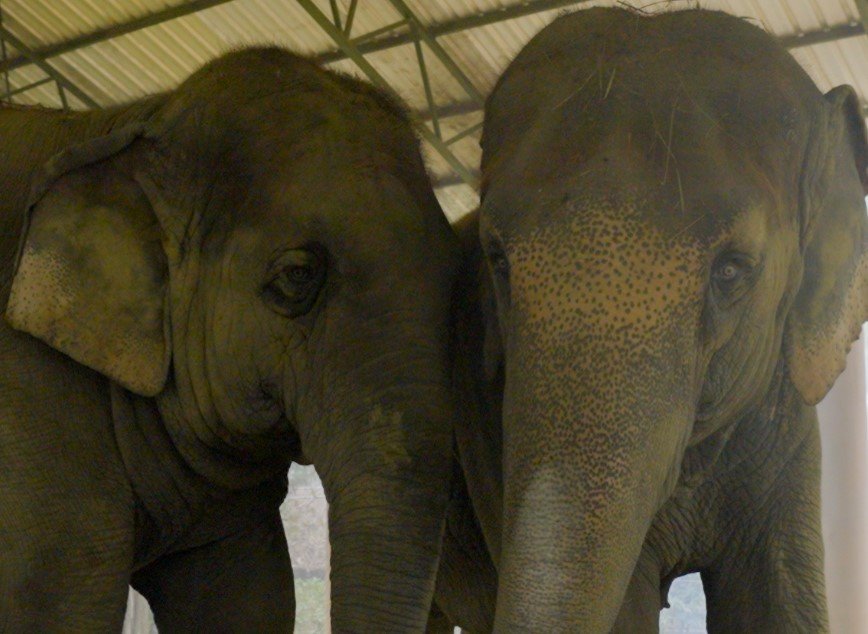Supreme Court orders SIT probe into Anant Ambani’s Vantara, raising global concerns over wildlife trade, conservation ethics, and corporate accountability.
NEW DELHI (India CSR): In a landmark decision that has sent ripples through India’s corporate and conservation circles, the Supreme Court has mandated a Special Investigation Team (SIT) to scrutinize the operations of Vantara, the sprawling wildlife rescue and rehabilitation center backed by billionaire Anant Ambani and his family’s Reliance Foundation. The order, issued on August 26, comes amid escalating allegations of illegal animal acquisitions, potential violations of international wildlife treaties, and financial improprieties at what is touted as the world’s largest facility of its kind.
This probe not only highlights tensions between corporate philanthropy and regulatory oversight but also raises global concerns about the ethics of large-scale animal conservation in an era of rampant wildlife trafficking.
It is claimed that Vantara, meaning “Star of the Forest” in Sanskrit, was established by Reliance as a philanthropic initiative, unveiled with much fanfare in February 2024 and formally inaugurated by Prime Minister Narendra Modi in March 2025. Spread across a 3,500-acre green belt in Gujarat’s Jamnagar district—within Reliance Industries’ vast refinery complex—the center is presented as an expression of Anant Ambani’s personal passion for animal welfare, inspired by the Hindu principle of “jeev seva” (service to life) and the teachings of Swami Vivekananda. Reliance asserts that through Vantara, Anant Ambani, the youngest son of Asia’s richest man Mukesh Ambani, has positioned the project as a beacon of global conservation, claiming to have rescued over 150,000 animals across more than 2,000 species from abusive conditions, habitat loss, poaching, and human-animal conflicts.
The facility boasts state-of-the-art amenities that rival top-tier zoos worldwide: advanced veterinary hospitals equipped with MRI machines, CT scanners, hydrotherapy pools, and even a hyperbaric oxygen chamber for elephants. Over 2,100 staff members, including veterinarians, nutritionists, and biologists, tend to residents ranging from endangered Indian species like rhinos, leopards, and crocodiles to exotic imports such as jaguars from Venezuela and various primates.
Vantara’s mission extends beyond rescue; it includes breeding programs, habitat restoration, and collaborations with international bodies like the International Union for Conservation of Nature (IUCN) and the World Wildlife Fund (WWF). In 2025 alone, the center received the Prani Mitra award from India’s Animal Welfare Board for its contributions to animal care.

Yet, beneath this glossy narrative lies a storm of controversy. Critics, including animal rights activists and investigative journalists, argue that Vantara’s rapid expansion—importing around 39,000 animals from 32 countries—may inadvertently fuel the illegal wildlife trade. A March 2024 report by Himal Southasian, republished by the Pulitzer Center, alleged that the sanctuary’s acquisitions from trafficking hotspots could violate Indian and international laws, incentivizing poachers and smugglers under the guise of conservation. In May 2024, over 1,800 animals, including tapirs and crocodiles, were airlifted from Venezuela, a move approved by authorities but criticized for lacking transparency in sourcing.
The Supreme Court’s intervention stems from multiple public interest litigations (PILs) filed in recent months, accusing Vantara of systemic irregularities. Key allegations include unlawful captivity of elephants and other Schedule I protected species under India’s Wildlife (Protection) Act of 1972, without requisite permissions from chief wildlife wardens.
Petitioners claim animals have been “smuggled” from temples in states like Arunachal Pradesh, Assam, and Maharashtra, often under court orders that bypass standard protocols. Further, breaches of the Convention on International Trade in Endangered Species of Wild Fauna and Flora (CITES)—to which India is a signatory—are cited, particularly regarding imports from countries with lax enforcement.
Financial and environmental concerns add layers to the scrutiny. Accusations of money laundering, misuse of carbon credits, and diverting water resources in an arid region like Gujarat have surfaced, with some alleging Vantara functions more as a “vanity project” or private menagerie than a genuine rehabilitation center. During Anant Ambani’s lavish wedding in July 2024, high-profile guests like Mark Zuckerberg, Bill Gates, and Ivanka Trump reportedly toured the facility, posing with animals in ways that critics say prioritized spectacle over welfare, potentially violating zoo guidelines. Animal mortalities and substandard veterinary practices are also under the lens, with calls for physical inspections to verify claims of world-class care.
The immediate trigger for the SIT was a high-profile case involving a 36-year-old elephant named Mahadevi, affectionately called Madhuri by locals in Maharashtra’s Kolhapur district. In July 2025, the Bombay High Court ordered her relocation to Vantara for treatment of ailments, a decision upheld by the Supreme Court despite widespread protests.

Thousands rallied in Kolhapur, demanding her return to her temple home, viewing the move as cultural appropriation by corporate interests. Maharashtra Chief Minister Devendra Fadnavis even pledged a review petition, with Vantara agreeing to join, highlighting the emotional and political stakes. This incident amplified broader PILs, including one by activist CR Jaya Sukin, who alleged systemic smuggling of endangered species.
In response, a bench comprising Justices Pankaj Mithal and Prasanna B. Varale constituted the SIT on August 26, emphasizing it as a “fact-finding inquiry” without prejudging Vantara’s operations. Headed by retired Supreme Court Justice Jasti Chelameswar—known for his 2018 press conference critiquing judicial transparency—the team includes former Uttarakhand and Telangana High Court Chief Justice Raghavendra Chauhan, ex-Mumbai Police Commissioner Hemant Nagrale, and IRS officer Anish Gupta.
The Gujarat forest department’s secretary must facilitate inspections, with assistance from the Central Zoo Authority and the Ministry of Environment, Forest, and Climate Change. The SIT’s mandate covers animal acquisitions, compliance with wildlife laws, veterinary standards, environmental impacts, and financial dealings, with a report due by September 12 and a hearing scheduled for September 15.
Vantara swiftly acknowledged the order, pledging “full cooperation” and reaffirming its commitment to “transparency, compassion, and full compliance with the law.” In a statement, the foundation stressed that its core mission—rescuing and rehabilitating animals—remains unchanged, urging the process to proceed “without speculation” for the animals’ sake. Reliance officials have consistently denied wrongdoing, asserting all transfers were legally vetted and aimed at welfare.
Internationally, the case has drawn attention from conservation watchdogs. In March 2025, 30 South African animal rights groups under the Wildlife Animal Protection Forum urged their government to probe exports to Vantara, citing CITES compliance issues and fears of incentivizing breeding farms linked to trafficking. The Guardian reported on August 26 that activists worry Vantara lacks plans to rewild endangered species, potentially turning it into a de facto zoo for elite viewing. Experts like Neelima Vallangi, a wildlife journalist, argue that while corporate funding can boost conservation, unchecked scale risks commodifying animals. Girish Punjabi, a tiger conservationist, notes the probe could set precedents for private sanctuaries worldwide, balancing innovation with accountability.
This development occurs against India’s evolving animal rights landscape, where corporate involvement in conservation is both praised and scrutinized. Reliance’s push toward net-zero emissions by 2035 aligns with Vantara’s green ethos, but critics question if such projects mask industrial impacts. Politically, the timing—amidst unrelated pressures on Ambani-linked entities like the Observer Research Foundation and gaming investments—fuels speculation of broader corporate realignments.
As the SIT delves in, the probe could either vindicate Vantara as a model for global wildlife rescue or expose cracks in how the ultra-wealthy engage with conservation. For now, the fate of thousands of animals hangs in the balance, underscoring the delicate interplay between power, philanthropy, and planetary stewardship. With the world watching, this case may redefine ethical boundaries in the fight against biodiversity loss.
(India CSR)







